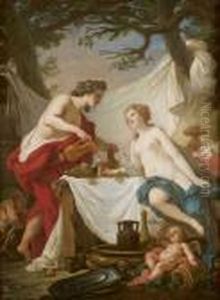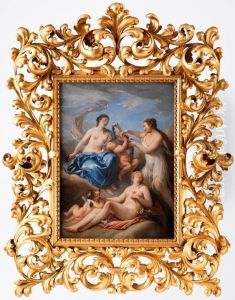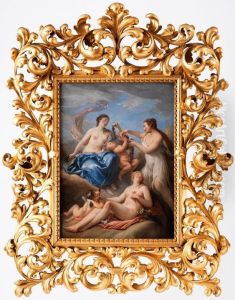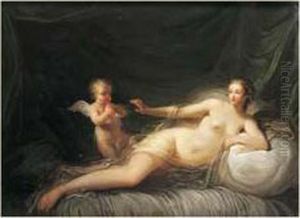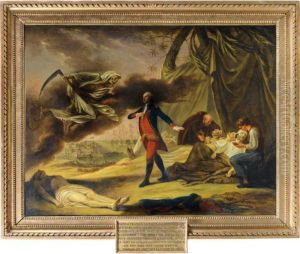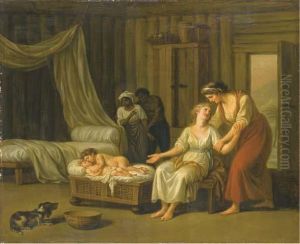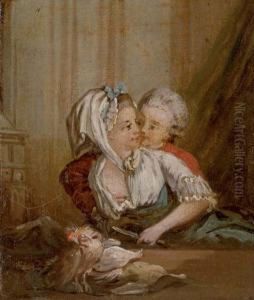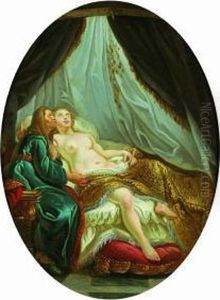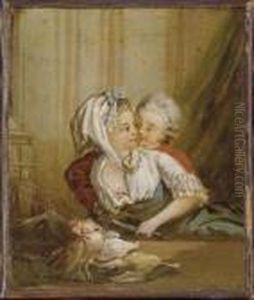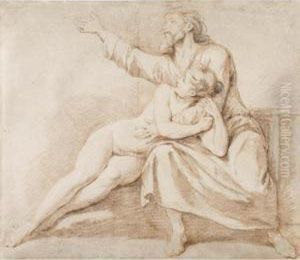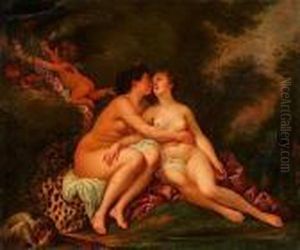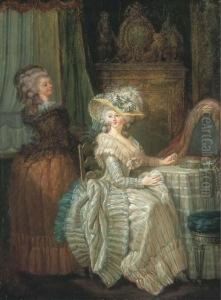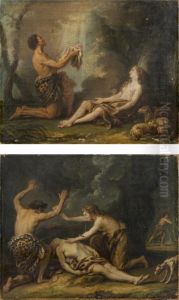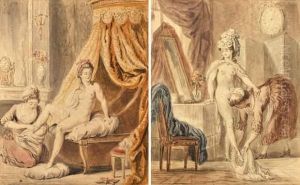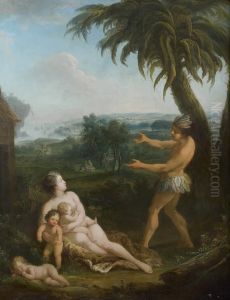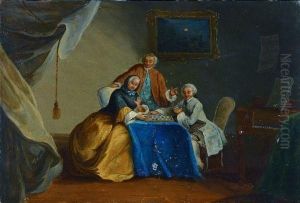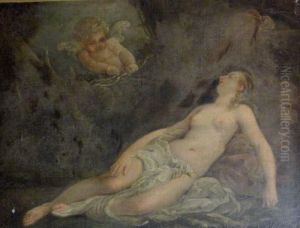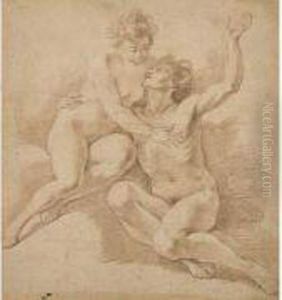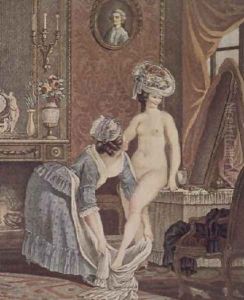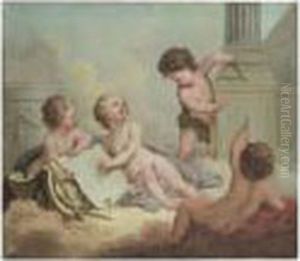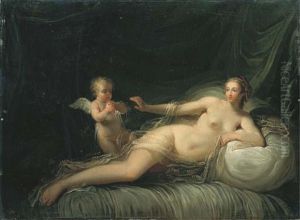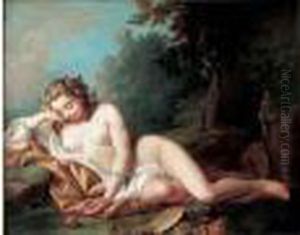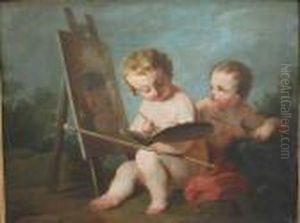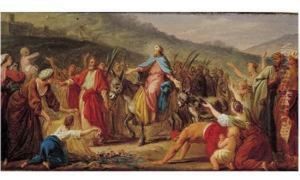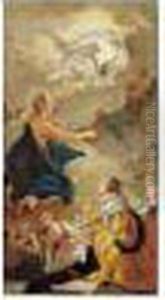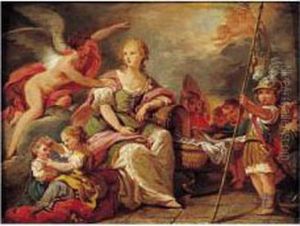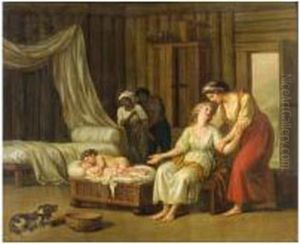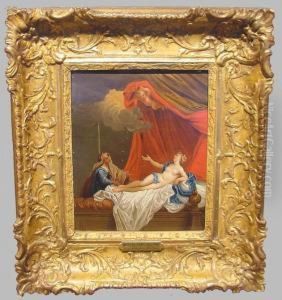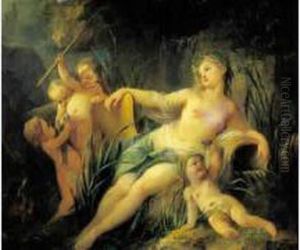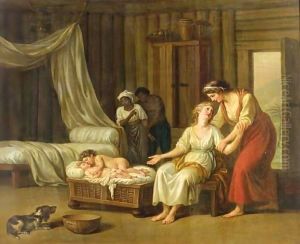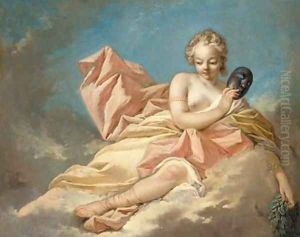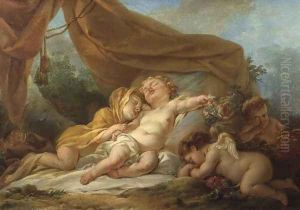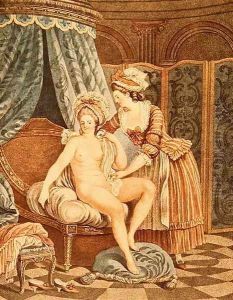Nicolas Rene Jollain Paintings
Nicolas René Jollain was a French painter born on September 19, 1732, in Paris. He was known for his work in the Rococo style, which was characterized by lightness, grace, and the use of curvilinear forms. Jollain's artistic talents were evident from a young age, and he received his early training from his father, François Jollain, who was also an accomplished artist.
During his career, Jollain became a respected figure in the French art world of the 18th century. He gained admission to the prestigious Académie Royale de Peinture et de Sculpture in 1755, at the age of 23, a testament to his skill and the high regard in which he was held by his contemporaries. His admission piece to the Académie, a painting titled 'The Death of Adonis', is a reflection of his ability to convey intricate mythological subjects with emotion and delicacy.
Jollain's works include religious paintings, portraits, and mythological scenes. His style evolved over the years, but he remained true to the Rococo tradition, with its emphasis on ornamental elegance and the depiction of the carefree aspects of the aristocratic life. However, Jollain's career also spanned a period of significant change in French art, as the Rococo style gave way to Neoclassicism. Despite this shift in artistic preferences, Jollain continued to receive commissions and maintained a degree of popularity.
Throughout his lifetime, Nicolas René Jollain produced a considerable body of work. He passed away on October 11, 1804, in Paris. Unfortunately, like many artists of his time, Jollain's fame did not endure well into the future, and he is not as well-remembered today as some of his contemporaries. Nonetheless, his contributions to the French Rococo movement and his position within the Académie Royale cement his place in the history of French art. His works are now primarily of interest to scholars and enthusiasts of 18th-century French painting.
